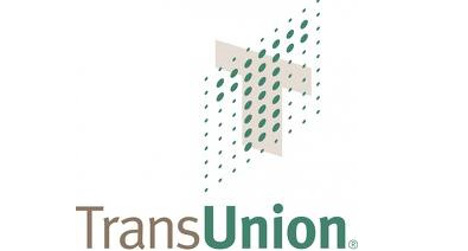As the finance company closed the year with a 16.2-percent jump in active dealers, Credit Acceptance Corp. watched its unit and dollar volumes rise by double figures during the fourth quarter as well, to leave the operation with a healthy gain in consolidated net income for 2013.
Credit Acceptance reported unit and dollar volumes increased 12.6 percent and 11.3 percent as the company originated 46,677 contracts during Q4. For the year, the company originated 202,250 loans, up from 190,023 in 2012.
The company's active dealer level finished 2013 at 6,394 stores, up from 5,319 dealerships a year earlier.
"There's a wide variety of dealerships that would work on our program that works at — very small and independent dealers and some of the largest franchise dealers in the country. We're not targeting one group or the other, and the increases we're seeing are really across all groups," Credit Acceptance chief executive officer Brett Roberts said last week when the company conducted a conference call to discuss its results.
As far as the bottom line, Credit Acceptance indicated consolidated net income for Q4 came in at $65.9 million or $2.80 per diluted share, up from $59.9 million or $2.40 per diluted share during the same period last year.
For all of 2013, the company's consolidated net income totaled $253.1 million or $10.54 per diluted share, compared to $219.7 million or $8.58 per diluted share Credit Acceptance generated in 2012.
Credit Acceptance also mentioned its increase in adjusted average capital of 17.6 percent due to growth in its loan portfolio derived primarily as a result of growth in new consumer loan assignments in recent years, which resulted in the dollar volume of new consumer loan assignments exceeding the principal collected on its loan portfolio.
"The growth in new consumer loan assignments in recent years was the result of an increase in active dealers, partially offset by a decline in volume per active dealer," executives said.
The company went on to pointed out its increase in its cost of capital of 20 basis points arrived primarily due to an increase in the average 30-year Treasury rate, which is used in the average cost of equity calculation, partially offset by a decline in the average cost of debt resulting from the change in mix of its outstanding debt.
Elsewhere, Credit Acceptance acknowledged that a full-year decrease of 60 basis points in its adjusted return on capital came primarily as a result of two factors:
—A decline in the yield on its loan portfolio decreased the adjusted return on capital by 120 basis points due to higher advance rates on new consumer loan assignments.
—An increase in other income increased the adjusted return on capital by 40 basis points primarily due to an increase in global positioning systems with starter interrupt devices fee income resulting from an increase in the fee earned per unit and an increase in vehicle service contract profit sharing income as a result of a new profit sharing arrangement entered into with a third-party provider during 2012.
After looking at all of the numbers, Credit Acceptance chief financial officer and chief accounting officer Kenneth Booth said, "I would say that we continue to be satisfied with the performance. We continue to grow net income, earnings per share, economic profit. We're growing the business in a challenging economic environment, so I'd say we're satisfied with the year."
CHICAGO — While staying at what analysts are calling manageable levels, TransUnion reported jumps in the auto loan delinquency rate on both a quarterly and yearly basis.
TransUnion indicated the ratio of borrowers 60 days or more delinquent on their auto loans increased to 1.04 percent in the third quarter. The level marked a rise from the previous quarter (0.87 percent) and the previous year (1.00 percent).
Despite the uptick, analysts pointed out the delinquency rate is well below the Q3 average of 1.22 percent observed between 2007 and 2013.
TransUnion also highlighted auto loan debt per borrower increased for the 10th straight quarter, moving up 4.7 percent from $15,943 in Q3 of last year to $16,685 in Q3 of this year.
On a quarterly basis, auto loan debt also increased from $16,410 in the second quarter.
The data provided are gathered from TransUnion's proprietary Industry Insights Report (IIR), a quarterly overview summarizing data, trends and perspectives on the U.S. consumer lending industry. The report is based on anonymized credit data from virtually every credit-active consumer in the United States.
"The auto loan story continues to be a positive one with relatively low delinquency rates and increased auto loan balances," said Pete Turek, vice president of automotive in TransUnion's financial services business unit.
"Auto loan originations also are increasing as the demand for both new and used autos remains strong. While subprime delinquency levels are rising, they still remain at manageable levels," Turek continued.
The subprime delinquency rate (those consumers with a VantageScore 2.0 credit score lower than 640 on a scale of 501 to 990) increased from 5.30 percent in Q3 2012 to 5.60 percent in Q3 of this year, according to the credit bureau.
Despite the increase, analysts added the delinquency rate for this group remains near levels observed in recent third quarters:
—Q3 of 2011 stood at 5.45 percent.
—Q3 of 2010 stood at 5.82 percent.
—Q3 of 2009 stood at 6.59 percent.
Viewed one quarter in arrears (to ensure all accounts are included in the data), TransUnion indicated new account originations increased to 6.55 million in Q2 2013, up from 5.89 million in Q2 2012. This level is the highest observed for a second quarter since TransUnion began tracking it in 2007 through IIR.
The share of non-prime, higher risk loan originations (with a VantageScore 2.0 credit score lower than 700) grew by 56 basis points (from 32.62 percent in Q2 2012 to 33.18 percent in Q2 2013). This percentage is still much lower than what was observed pre-recession (38.04 percent in Q2 2007).
TransUnion recorded 59.5 million auto loan accounts as of Q3 2013, up from 56.2 million in Q3 2012.
"This number is now approaching pre-recession levels, and we believe there may be more room for it to rise," Turek said.
Only 15 states experienced either a decline or had their auto loan delinquency rates remain flat between Q3 2012 and Q3 of this year.
TransUnion noticed the largest delinquency declines occurred in Oregon, South Dakota and California. The firm said the largest increases occurred in Alaska, Michigan and West Virginia.
Auto loan balances rose in every state except Michigan, which experienced a 0.3 percent decline between Q3 2012 and Q3 2013.
TransUnion is forecasting auto loan delinquencies to rise slightly in the fourth quarter because of historic seasonality associated with auto financing.
"Auto loan delinquencies generally rise in the fourth quarter as consumers place higher priority on other consumer goods during the holiday shopping season," Turek said.
TransUnion's forecast is based on various economic assumptions, such as gross state product, consumer sentiment, unemployment rates, real personal income, and others. The forecast would change if there were unanticipated shocks to the economy.
This information is reported by TransUnion and is part of its ongoing series of quarterly analyses of credit-active U.S. consumers and how they are managing credit related to mortgages, credit cards and auto loans.
TransUnion's previous quarterly reports utilized the company's Trend Data database, which consisted of 27 million anonymous consumer records randomly sampled every quarter from TransUnion's national consumer credit database. The latest reports now include nearly all active credit consumers.
Continue the conversation with SubPrime Auto Finance News on LinkedIn and Twitter.
Normal
0
false
false
false
EN-US
X-NONE
X-NONE
/* Style Definitions */
table.MsoNormalTable
{mso-style-name:”Table Normal”;
mso-tstyle-rowband-size:0;
mso-tstyle-colband-size:0;
mso-style-noshow:yes;
mso-style-priority:99;
mso-style-qformat:yes;
mso-style-parent:””;
mso-padding-alt:0in 5.4pt 0in 5.4pt;
mso-para-margin-top:0in;
mso-para-margin-right:0in;
mso-para-margin-bottom:10.0pt;
mso-para-margin-left:0in;
line-height:115%;
mso-pagination:widow-orphan;
font-size:11.0pt;
font-family:”Calibri”,”sans-serif”;
mso-ascii-font-family:Calibri;
mso-ascii-theme-font:minor-latin;
mso-fareast-font-family:”Times New Roman”;
mso-fareast-theme-font:minor-fareast;
mso-hansi-font-family:Calibri;
mso-hansi-theme-font:minor-latin;}




